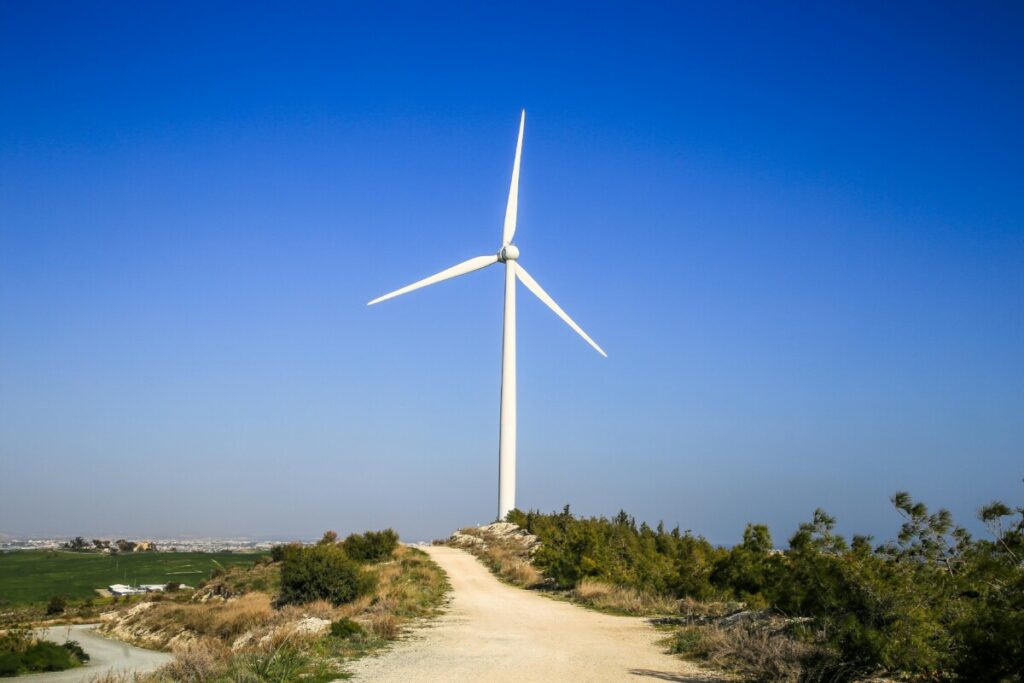What Is Green Technology?

In today’s rapidly evolving world, the concept of green technology has become increasingly prevalent as individuals and industries alike recognize the importance of sustainability and environmental conservation. Green technology, also known as sustainable or environmental technology, refers to the development and application of products, processes, and services that aim to minimize negative impacts on the environment while improving efficiency and productivity.
This innovative approach utilizes clean and renewable energy sources, reduces carbon emissions, and promotes resource conservation. From solar panels and wind turbines to energy-efficient appliances and electric vehicles, green technology encompasses a wide range of solutions that contribute to a more sustainable future. As the global population continues to grow and environmental challenges become more pressing, the adoption of green technology is crucial in mitigating climate change and preserving our planet for future generations.
What does Green Tech stand for?
When you hear the term “Green Tech,” it refers to technologies and practices that are aimed at reducing environmental impact and promoting sustainability. This encompasses a broad range of innovations and solutions designed to address various environmental challenges.
Key Takeaways:
Green Tech stands for environmentally friendly technologies and practices.
It aims to reduce environmental impact and promote sustainability.
Green Tech encompasses a wide range of innovations and solutions.
What is Green Tech?
A formal definition of Green Tech:
Green Tech, also known as Environmental Technology or Clean Technology, refers to the application of technology and practices that aim to achieve sustainable development and address environmental challenges. It involves the development and use of innovative solutions to minimize the negative impact on the environment while also providing social and economic benefits.
Why is Green Tech important?
Green Tech is essential because it helps us transition from traditional, resource-intensive methods to more sustainable and efficient approaches. It plays a crucial role in mitigating climate change, conserving natural resources, reducing pollution, and improving quality of life. Additionally, Green Tech offers economic opportunities by creating new jobs and driving innovation in industries.
The simplest definition of Green Tech:
In simpler terms, Green Tech can be defined as any technological solution or practice that promotes sustainability and has a positive impact on the environment. It encompasses a wide array of innovations, ranging from renewable energy sources to waste management systems.
Benefits & Importance of Green Tech
Green Tech offers numerous benefits and is of utmost importance in addressing pressing environmental issues.
Some key benefits include:
Environmental Preservation: Green Tech helps in conserving natural resources, reducing pollution, and minimizing our carbon footprint. This leads to cleaner air, water, and land, safeguarding ecosystems and biodiversity.
Mitigating Climate Change: By shifting towards renewable energy sources and energy-efficient practices, Green Tech plays a vital role in reducing greenhouse gas emissions and mitigating climate change.
Economic Opportunities: The implementation of Green Tech solutions creates new job opportunities and drives economic growth by fostering innovation and investment in sustainable industries.
Health and Well-being: Green Tech contributes to improved public health by reducing exposure to harmful substances, enhancing indoor and outdoor air quality, and promoting a healthier and more sustainable lifestyle.
Types of Green Tech
Green Tech encompasses a wide range of technologies and practices.
Here are some key types of Green Tech:
Renewable Energy: This includes solar, wind, hydro, and geothermal energy, which are sustainable alternatives to fossil fuels. These sources generate clean energy and have lower environmental impacts.
Energy Efficiency: Green Tech focuses on designing energy-efficient systems and appliances to conserve energy and reduce waste. This involves efficient lighting, smart thermostats, insulation, and energy management systems.
Waste Management and Recycling: Green Tech solutions aim to minimize waste generation, promote recycling, and develop innovative waste management processes such as composting and waste-to-energy technologies.
Sustainable Transportation: This includes electric vehicles, biodiesel, hydrogen fuel cells, and other sustainable transportation alternatives that reduce carbon emissions and dependency on fossil fuels.
Water Conservation and Management: Green Tech solutions in water conservation and management focus on reducing water consumption, improving irrigation techniques, and implementing efficient water treatment and recycling systems.
How does Green Tech work?
Green Tech works by integrating sustainable practices and technologies into various sectors to minimize the negative impact on the environment. It encompasses the development, implementation, and use of innovative solutions that promote sustainability.
Green Tech solutions often involve:
The use of renewable energy sources instead of fossil fuels to reduce carbon emissions and combat climate change.
Increasing energy efficiency by developing energy-saving technologies and practices.
Implementing waste management systems that prioritize recycling and minimize waste generation.
Promoting sustainable transportation alternatives that reduce reliance on fossil fuels and curb pollution.
Adopting water conservation and management strategies to ensure efficient use of water resources.
By integrating Green Tech solutions, we can transition towards a more sustainable and environmentally-friendly future.
Green Tech innovations and advancements
Green Tech is a rapidly evolving field, constantly advancing and pushing boundaries to find more sustainable solutions.
Some notable Green Tech innovations include:
Solar Technology: The advancements in solar technology have made it more affordable and efficient, enabling wider adoption of solar panels for both residential and commercial use.
Battery Storage: The development of advanced battery storage systems makes renewable energy sources more reliable and accessible by storing excess energy for later use.
Smart Grids: Smart grids enable the two-way flow of electricity and allow for more efficient energy distribution, reducing waste and optimizing energy consumption.
Internet of Things (IoT): The integration of IoT into Green Tech allows for real-time monitoring and control of energy consumption, optimizing resource usage and reducing waste.
Precision Agriculture: Green Tech is revolutionizing agriculture by utilizing sensors, drones, and precision farming techniques to optimize water and fertilization, reducing waste and improving crop yields.
These advancements and innovations in Green Tech continue to drive progress, bringing us closer to a sustainable future.
Green Tech impact on the environment
Green Tech has a significant impact on the environment by reducing pollution, conserving natural resources, and mitigating climate change.
Some of the key environmental benefits of Green Tech include:
Reduced Carbon Emissions: The adoption of renewable energy sources and energy-efficient practices reduces dependency on fossil fuels, resulting in lower carbon emissions and decreased contribution to climate change.
Conservation of Natural Resources: Green Tech solutions promote the efficient use of resources such as water, land, and minerals, reducing the strain on ecosystems and preserving natural habitats.
Reduced Pollution: Green Tech aims to minimize pollution through waste reduction, recycling, and the use of cleaner and greener technologies. This leads to improved air quality, reduced water contamination, and healthier ecosystems.
Biodiversity Conservation: By conserving natural habitats and reducing environmental degradation, Green Tech helps protect biodiversity, preserving the richness of ecosystems and supporting wildlife.
The positive impact of Green Tech on the environment is critical for the long-term well-being of our planet and future generations.
How to implement Green Tech solutions: On-site applications
1. Energy-efficient buildings and infrastructure:
Energy-efficient buildings and infrastructure play a vital role in reducing energy consumption and greenhouse gas emissions in the built environment. By incorporating sustainable construction materials, efficient insulation, and smart energy management systems, we can significantly reduce energy waste and environmental impact.
Importance of energy-efficient buildings and infrastructure:
Energy-efficient buildings are not only beneficial for the environment but also for occupants. They improve indoor air quality, enhance comfort, and reduce utility costs. Additionally, energy-efficient infrastructure, such as smart grids, can optimize energy distribution and enable efficient resource usage.
2. Renewable energy sources:
Harnessing renewable energy sources is a fundamental aspect of Green Tech. One of the most common and accessible options is solar energy, which involves installing solar panels on rooftops or in open spaces to generate clean electricity. Other renewable sources such as wind, hydro, and geothermal energy can also be utilized depending on the geographical location and resources available.
How to harness renewable energy sources:
Install solar panels on rooftops or in open spaces to capture solar energy.
Utilize wind turbines in areas with consistent wind patterns to generate wind power.
Explore the potential of hydroelectric power by using flowing or falling water to generate electricity.
Tap into geothermal energy by using heat from the Earth’s core to generate power.
Implementing renewable energy sources not only reduces reliance on fossil fuels but also contributes to a more sustainable energy system.
3. Recycling and waste management:
Implementing recycling and waste management practices is crucial for reducing waste and promoting a circular economy. Encouraging recycling at home, in businesses, and through community programs is an effective way to minimize landfill waste and conserve resources.
4. Sustainable transportation:
Adopting sustainable transportation methods is essential for reducing carbon emissions and improving air quality. Some ways to achieve this include promoting public transportation, using electric vehicles, and implementing bicycle-friendly infrastructure.
How to adopt sustainable transportation methods:
Encourage the use of public transportation by investing in efficient and reliable systems.
Promote cycling and walking infrastructure to encourage active transportation.
Transition to electric vehicles and invest in charging infrastructure.
Implement carpooling and ridesharing programs to reduce the number of vehicles on the road.
5. Water conservation and management:
Water is a vital resource, and conserving it is crucial for sustainable development. Implementing water-saving fixtures, utilizing rainwater harvesting systems, and adopting efficient irrigation techniques are some effective ways to conserve and manage water resources.
Best practices for water conservation and management:
Install water-saving toilets, faucets, and showerheads to minimize water waste.
Harvest rainwater for tasks such as irrigation and toilet flushing.
Use efficient irrigation methods such as drip irrigation or smart irrigation systems.
Implement water recycling and reuse systems to reduce freshwater consumption.
Implementing these on-site Green Tech solutions can have a significant impact on reducing environmental degradation and promoting sustainability.
How to implement Green Tech solutions: Off-site applications
6. Smart grid technology:
Smart grid technology is a crucial aspect of Green Tech, enabling the efficient distribution and management of electricity. It involves integrating advanced monitoring, control, and communication systems to optimize energy consumption and reduce wastage.
Benefits of smart grid technology:
Improved efficiency in energy distribution, reducing transmission losses.
Real-time monitoring and control, enabling better load management and demand response.
Integration of renewable energy sources at a larger scale.
Enhanced reliability by detecting and isolating faults quickly.
7. IoT in Green Tech:
The integration of Internet of Things (IoT) technology into Green Tech solutions offers various benefits. IoT allows for real-time data collection, analysis, and control, enabling more precise resource management, improved energy efficiency, and streamlined processes.
How IoT enhances Green Tech solutions:
Real-time energy monitoring and optimization, leading to reduced energy consumption and cost savings.
Remote control and automation of energy-consuming devices, maximizing efficiency.
Advanced analytics and predictive maintenance to optimize resource usage and reduce waste.
8. Green Tech in agriculture and farming:
Green Tech has a significant impact on the agricultural sector by promoting sustainable practices and optimizing resource usage. Precision farming techniques, such as sensor-based irrigation, data-driven crop management, and drone technology, improve productivity while minimizing resource waste.
Importance of Green Tech in agriculture and farming:
Increased crop yields and reduced resource wastage through optimized irrigation and fertilization.
More efficient water management and reduced water consumption through sensor-based irrigation.
Minimized use of pesticides and fertilizers, reducing environmental pollution and impact.
9. Eco-friendly manufacturing processes:
Green Tech solutions in manufacturing focus on reducing the environmental impact of production processes. This includes implementing energy-efficient machinery, recycling and reusing materials, and minimizing waste generation.
10. Green Tech in the digital world:
Green Tech is also shaping the digital world, with various innovations aimed at reducing energy consumption and environmental impact. Cloud computing, virtualization, and energy-efficient data centers are contributing to a more sustainable digital infrastructure.
How Green Tech is shaping digital technologies:
Energy-efficient data centers that prioritize renewable energy sources and utilize advanced cooling technologies.
Virtualization and cloud computing that enable resource sharing and reduce the need for physical infrastructure.
Energy-efficient devices and technologies to reduce energy consumption in the digital realm.
Green Tech strategies and best practices
Incorporating Green Tech strategies and best practices is essential for maximizing the environmental benefits.
Some key strategies include:
Conducting energy audits and assessments to identify areas for improvement and prioritize energy-saving initiatives.
Establishing sustainability goals and targets to guide decision-making and track progress.
Investing in research and development to drive innovation in Green Tech solutions.
Collaborating with industry partners and stakeholders to promote knowledge sharing and accelerate the adoption of sustainable practices.
Educating and raising awareness among individuals, businesses, and communities about the importance of Green Tech and sustainability.
Green Tech tools and resources
The adoption and implementation of Green Tech solutions can be facilitated by utilizing various tools and resources.
Some essential tools and resources include:
Energy management systems: These tools allow for real-time monitoring and optimization of energy consumption in buildings and facilities.
Green Tech websites and platforms: Online resources that provide information, case studies, and guidance on various Green Tech solutions.
Government programs and incentives: Many governments offer incentives and grants for implementing Green Tech solutions, reducing the financial burden.
These tools and resources can empower individuals, businesses, and organizations to make informed decisions and take action toward a more sustainable future.
Wrap Up
Green Tech is not just a buzzword; it represents a significant shift towards a more sustainable and environmentally friendly society. By adopting and implementing Green Tech solutions, we can reduce our impact on the environment, mitigate climate change, and pave the way for a cleaner and healthier planet. From energy-efficient buildings to renewable energy sources, and waste management systems to sustainable transportation, Green Tech offers a multitude of opportunities to make a positive difference. So let’s embrace Green Tech and join the movement towards a greener future!
https://serenity7wellness.com/index.php/2024/02/21/living-well-integrating-high-tech-wellness-devices/
https://serenity7wellness.com/index.php/2023/12/22/an-exploration-of-autonomous-vehicles/
https://www.greentech.earth/
FAQs
Q: What is green technology?
A: Green technology refers to the use of technology and science to create sustainable solutions that have a minimal impact on the environment. It encompasses a wide range of practices and innovations aimed at reducing carbon emissions, promoting clean energy production, and addressing climate change.
Q: What are some examples of green technology?
A: Examples of green technology include solar panels for harnessing solar energy, wind turbines for wind energy production, electric vehicles for reducing carbon emissions, and energy-efficient appliances for conserving power.
Q: What are the benefits of green technology?
A: Green technology offers various benefits including reducing greenhouse gas emissions, promoting energy efficiency, improving air and water quality, creating green jobs, and contributing to the fight against climate change.
Q: How is green technology evolving?
A: Green technology is continuously evolving with new technologies and innovations being developed to address environmental challenges. This evolution includes advancements in carbon capture, energy storage, climate tech, and sustainable technology.
Q: Which companies are leading the way in green technology?
A: Several companies are at the forefront of green technology including Tesla for electric vehicles, Tesla Solar for solar energy solutions, Vestas for wind turbines, and Enphase Energy for energy storage technology.








